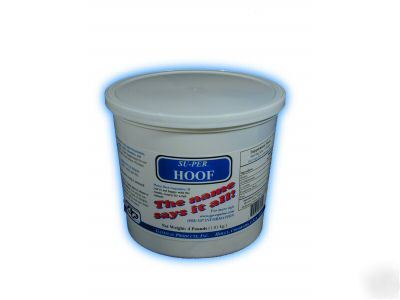Wisconsin Parts Database Instructions and Discussion Team/Group > ILLINOIS
> Motors and tools
> Remove
> Used
> Without Warranty
> Super hoof by gateway professional hoof care management
Super hoof by gateway professional hoof care management
Hoof care should be as routine as feeding and watering. It should include:
3. Corrections of minor imperfections
4. Treatment of foot diseases and injuries
Most foot care practices can be done by the average horse owner.
It is, however, important to know when to seek the help of a professional, especially for corrective shoeing and disease treatment and control.
To understand proper care of a horse's feet, first study and understand the structure of the foot and the functions of its various parts. The major parts of a horse's foot are the hoof wall, coronet, sole, frog and the internal structures such as the bones, cartilages, tendons and connective tissue. Internal structures will be discussed briefly on this page.
The hoof wall is a hoary substance made up of parallel fibres . It should be dense, straight, and free from rings (ridges) and cracks. Viewed from the side, the wall at the toe should be a continuation of the slope of the pastern.
The main functions of the wall are to:
1. Provide a weight-bearing surface not easily worn away
2. Protect the internal structure of the foot
3. Maintain moisture in the foot
Usually, the hoof wall is thicker at the toe than at the quarter and heel. The hoof wall is protected by the periople, a varnish-like coating that holds moisture in the hoof.
The coronet, or coronary band, is the source of growth for the hoof wall. It is directly above the hoof wall and is protected by a thick layer of skin and dense hair. A healthy foot will grow about 3/8 inch per month. A change in the rate of growth of the hoof can be caused by a change in the amount of exercise, the ration, the onslaught of illness and the general state of health and condition of the animal. Injury to the coronary band can result in irregular growth of the hoof wall and can develop into a permanently unsound hoof wall.
The hind feet may grow faster than the fore feet, and unshod feet may grow faster than shod feet. The feet of mares and geldings seem to grow faster than those of stallions.
The sole of the foot is a hoary substance that protects the sensitive inner portions of the foot. It should be firm, slightly concave and of uniform texture. The horse has no feeling at the exterior sole surface.
A flat-footed horse tends to receive more bruises and injures to the sole. Also, horses that have experienced founder and have developed a dropped sole are more easily bruised at the sole.
The frog, located at the heel of the foot, forms a "V" into the center of the sole. The frog is a spongy, flexible pad and is also a weight-bearing surface. It is the intermediate organ between the plantar cushion and the source of pressure from the horse's weight. The frog is differentiated from the sole of the foot by two lines called commissures.
The condition of the frog is generally a good indication of the health of the foot. Without proper flexibility, expansion and ground contact the frog cannot perform its function in complementing the circulation of blood and the absorption of shock throughout the foot.
To be able to provide proper foot care first gain an understanding of some of the important internal parts of the foot and their functions.
Coffin bone - provides the shape of the foot and the rigidity needed to bear weight. Plantar cushion - expands and contracts to absorb shock and pumps blood from the foot back towards the heart.
Navicular bone - serves as a fulcrum and bearing surface for the deep flexor tendon which is responsible for extension of the foot as it progresses through a stride.
Sensitive laminae - serves as a means of attachment for the hoof wall and the coffin bone and also as the main area of blood circulation within the foot.
Simple and necessary Routine Foot Care
Disease organisms concentrate where animals are confined, so cleanliness is very important. Horses kept in a stall or small pen should have their feet picked or cleaned daily to reduce the risk of thrush. Thrush is the condition resulting from bacterial penetration into the frog and surrounding area. The bacteria produce a foul odor and cause the frog to become soft and mushy. If allowed to go untreated, serious lameness can result and extensive treatment will be necessary.
Foot care is one of the most neglected horse management practices. Most lameness that impairs the usefulness of a horse can be prevented by proper foot care and reasonable management.
Routine daily foot care means regular use of the hoof pick to clean the horse's feet. A fine bristled wire brush is also useful for cleaning the sole, frog and hoof wall. Take care not to damage the periople with too much pressure from the wire brush: the result would disturb the moisture balance of the foot.
Super Hoof by Gateway "NOW WITH MORE BIOTIN AND GELATIN!!" contains:
dl-Methionine - 75 mg. per ounce,
Vitamin B-6 - 22 mg. per ounce and
Super Hoof by Gateway is a specially formulated blend of natural proteins, minerals, trace elements and amino acids. This is a very effective supplement for hoof repair, growth, and maintenance in a dextrose base with an apple flavor that horses love.
Super Hoof comes in a new plastic 2 1/2 pound tub w/ 1 ounce scoop included is only $23.78. A 2 1/2 pound tub of Hoof Pro is 40 ounces enough for a 1000 pound horse for 40 days at 1 ounce a day.

